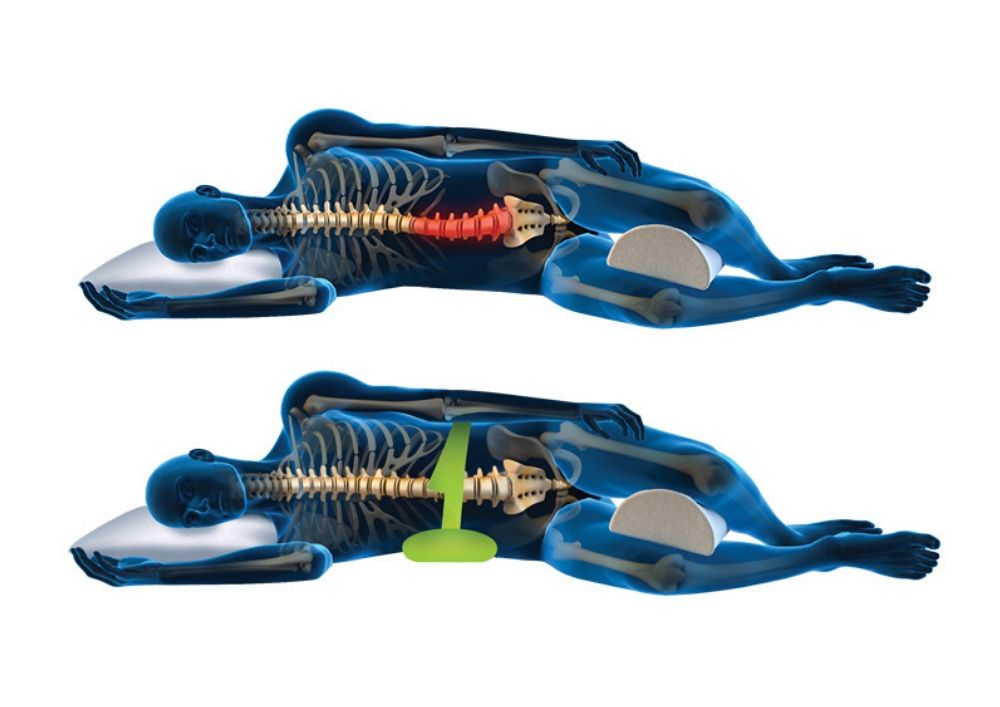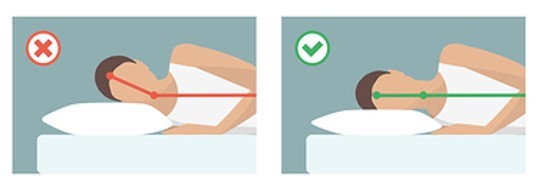Good sleep is a key part of recovery but if you have ever tried to sleep with severe back or neck pain you will know just how hard it can be. Poor sleep will slow recovery and increase pain and this can quickly develop into an endless cycle of more pain and worsening sleep.
In this article will go through some simple strategies to break this cycle and reduce back and neck pain at night.
Unfortunately, when it comes to sleeping position there is no single best answer. Use pain as your guide and be prepared to switch positions regularly throughout the night in order to remain comfortable.
A pillow or support between knees can help of reduce twisting of the spine and pelvis.
A support under the trunk can help to reduce painful side bending. A small pillow of the right thickness and density can work for this purpose. Alternatively, the PropAir Sleeper has been specially designed to help support the back when sleeping.

For neck pain, make sure that your pillow is of the correct thickness and density to place your neck in a neutral position.

A support under your knees can help to reduce the compression of the spinal joints when laying on your back so this position can be helpful for facet joint pains or arthritic back problems.
Support under your lower back can help to prevent your lower back flexing into the mattress. This can be particularly helpful for those with disc problems. Use either a well-fitting pillow or the PropAir Sleeper support.

For neck problems, use a pillow that is the right thickness and density to place your neck in a neutral position. The more rounded your mid-back, the thicker a pillow you will likely need, but a pillow that is too thick will put your head and neck in a flexed position:

Although this not a generally recommended long-term sleeping position, it can be comfortable in the short term for many patients with lower back disc pain.
Relaxation techniques can help to both reduce pain and improve sleep. Try performing the simple Relaxation Response Exercise before bed.

We can use the application of hot and/or cold to help to reduce pain in the short term which is often enough to get you off to sleep. Hot/ cold packs with a compression wrap can be useful to hold the pack in position.
If your pain is severe and is waking you often, a topical cooling or heating gel (such as Flexall) can be more practical to use throughout
the night.
‘How to Reduce Back and Neck Pain at Night’ was written by Steffen Toates. Steffen is a chiropractor at Dynamic Health Chiropractic in Jersey CI. For more information about Steffen click here.
© 2025 Dynamic Health. Powered by Oncord
Leave a Comment
There’s my phone number 07700352270 or I will guive you guys a call soon